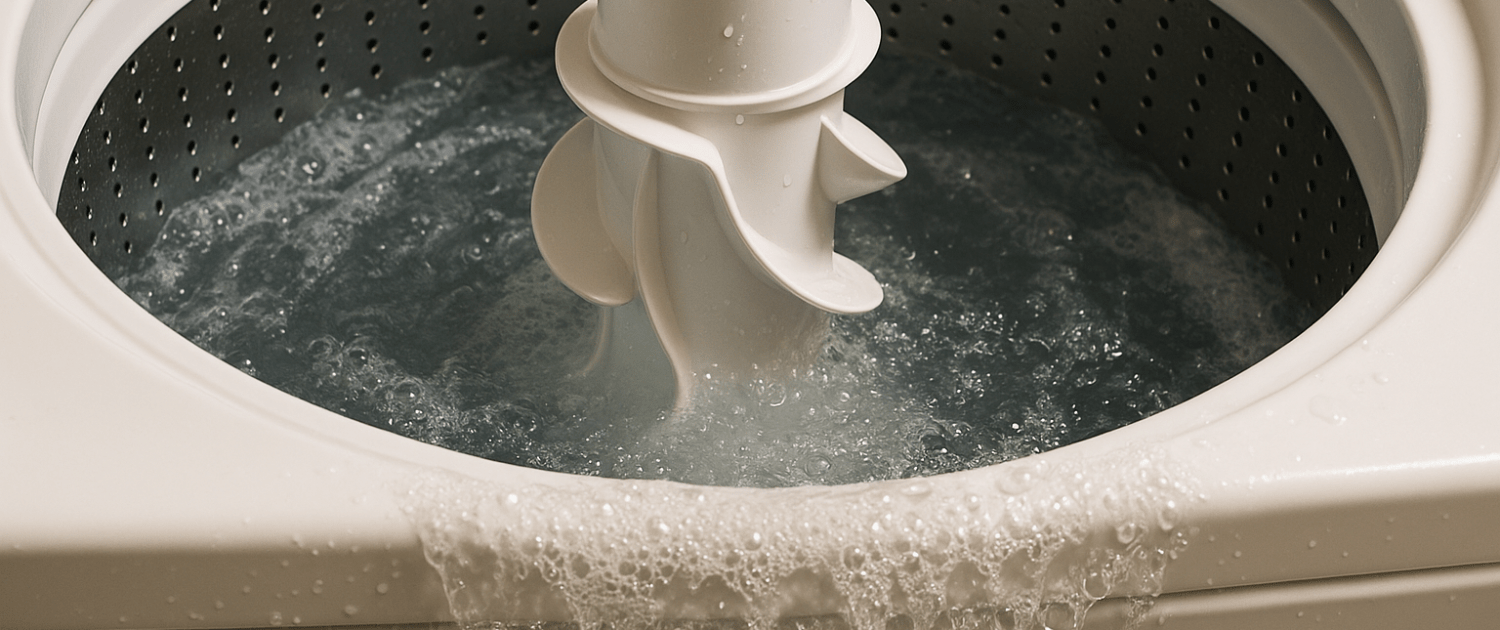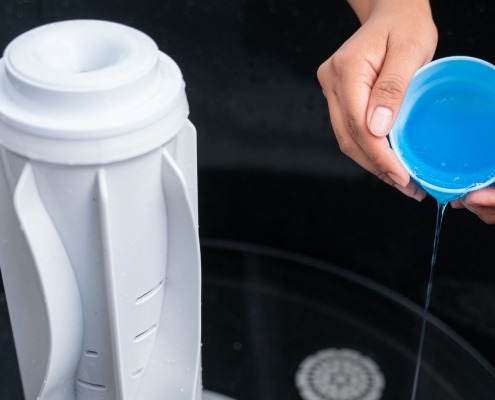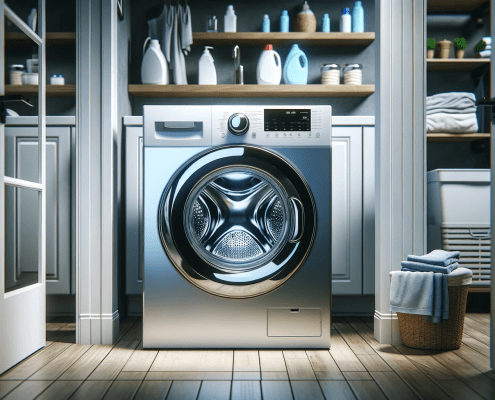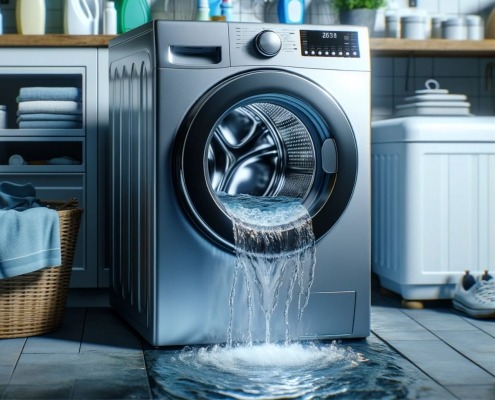Easy Fixes for a Whirlpool Top Load Washer Not Draining Water
Steven E / Tuesday June 17, 2025
Your Whirlpool washer won’t drain, and laundry is piling up fast. Before calling for repairs, let’s walk through a few simple fixes you can handle yourself. A clogged drain hose or a faulty pump might be the issue, and with the right steps, you can get your washer running again.
If you need any replacement parts for your Whirlpool washer, you can enter your model number at AppliancePartsPros.com to order them. Most orders arrive in just two business days, and we have thousands of free guides to show you how to install your new parts.
The information in this article may not apply to your specific appliance model. We recommend consulting your manufacturer’s documentation or contact us with any questions.
Necessary supplies
- 1/4″ nut driver
- Channel locks
- Multimeter
- 8mm socket with a ratchet
Safety tips
When working on any appliance, always keep safety first to avoid personal injury or damage to the appliance or its parts. Here are some tips to keep in mind:
- Always power off and unplug your appliance or switch off the circuit breaker before you attempt any maintenance or replacement work. This keeps you safe by eliminating any risk of electric shock.
- If the appliance has recently been used, give it plenty of time to cool down before working on it.
- Take your time while working to prevent accidents and personal injuries. Rushing is the enemy of precision.
- Work in a well-lit area so you can see and access appliance parts.
- Keep your workspace free of clutter and other obstacles. Keep children and pets away from the work area.
- Never work on internal parts with wet hands. Make sure the work area is completely dry.
- Check the user manual to see if there are specific installation or safety instructions related to your appliance or replacement part.
- Be gentle when handling or removing parts. Excessive force might damage the appliance or cause personal injury.
- Wear insulated work gloves to protect your hands from sharp metal parts and debris.
- When working with wires, avoid touching any exposed wires or terminals. If you need to touch a wire, use a non-conductive tool or wear insulating gloves to prevent electrical shock.
- Always take photos or make a note of wiring terminals or other connections before disconnecting them to make reassembly easier.
- Don’t test live voltage with a multimeter if you’re unfamiliar with how to prevent short-circuiting.
- Consider wearing safety glasses and/or a dust mask when working with chemicals, dust or a large amount of debris to prevent irritation or injury.
- Turn off the water supply at the outlet before beginning repairs. Keep towels ready to catch any residual water in the system when removing parts.
How to fix a non-draining Whirlpool washer
Here are the steps to diagnose and fix a Whirlpool washer that is not draining properly.
Step 1. Check for clogs
- Unplug the washer from the power outlet.
- Check the standpipe for any clogs by running water through it.
- Disconnect the drain hose from the washer and check for blockages. Flush it with water if necessary.
- Inspect the drain pump for any obstructions such as lint, coins, or small clothing items.
- Look at the pump impeller for any damage or looseness.
Step 2. Access the control board
- Plug the washer back in to prepare for testing.
- Use a ¼” nut driver to remove the screws securing the rear panel over the console.
- Insert a putty knife into the front corners of the console to release the spring clips.
- Lift up on the console to remove it and access the control board.
Step 3. Enter service diagnostic mode
LIVE VOLTAGE WARNING: For this test, the washer needs to be plugged in and powered on. Please be very careful to protect yourself from electric shock, which has the potential to cause serious injuries. Don’t ever test live voltage if you’re uncomfortable using a multimeter.
- Select any three buttons except Power.
- Within 8 seconds, press and release the first button, then the second, then the third.
- Repeat this process two more times.
- Verify that all indicators on the console light up for 5 seconds and “888” appears on the display.
- Use the second button you pressed to enter service test mode.
- Confirm that all LEDs turn off except the Power button and that the Start button indicator is flashing.
Step 4. Perform the drain pump test
- Use the Soil Level button to increase function numbers and the Temperature button to decrease them.
- Navigate to function 008 for the drain pump test.
- Press Start to toggle the drain pump on.
Step 5. Test the control board output
- Locate the J4 connector on the main control board.
- Set your multimeter to AC voltage (Vac).
- Place one multimeter lead on Pin 3 (Blue Wire) and the other on Pin 1 (White Wire).
- Check for 120 Vac at this point.
- If there is no 120 Vac, replace the control board.
- If there is 120 Vac, check the wiring between the control board and the drain pump for damage.
Step 6. Test the drain pump
- Tilt the washer backward to access the bottom where the drain pump is located.
- Set your multimeter to AC voltage (Vac).
- Place one lead on one wire of the drain pump and the second lead on the other wire.
- Put the washer back into service test mode and turn on the drain pump.
- Check for 120 Vac at the drain pump.
- If there is no 120 Vac, double-check the wiring.
- If 120 Vac is present but the drain pump does not run, replace the drain pump.
Step 7. Reassemble and test
- If a clog is found in the pump, remove the obstruction and test again.
- Reassemble the washer by securing the console back in place and tightening all screws.
- Plug the washer back in and run a test cycle to confirm the issue is resolved.
Additional information
Thanks for stopping by! We hope this guide helped you fix your non-draining Whirlpool washer.
If you run into any issues, just give us a call at 1-877-477-7278 or start a chat with a pro on our website so we can help you through it. We’ve got many more troubleshooting and repair guides on our DIY blog and YouTube channel, plus all the parts you need to do it yourself at AppliancePartsPros.com.
With nearly a decade of experience in providing top-notch customer service regarding appliance parts and repair, Steven enjoys sharing practical advice, troubleshooting tips, and interesting information to help readers stay informed.





